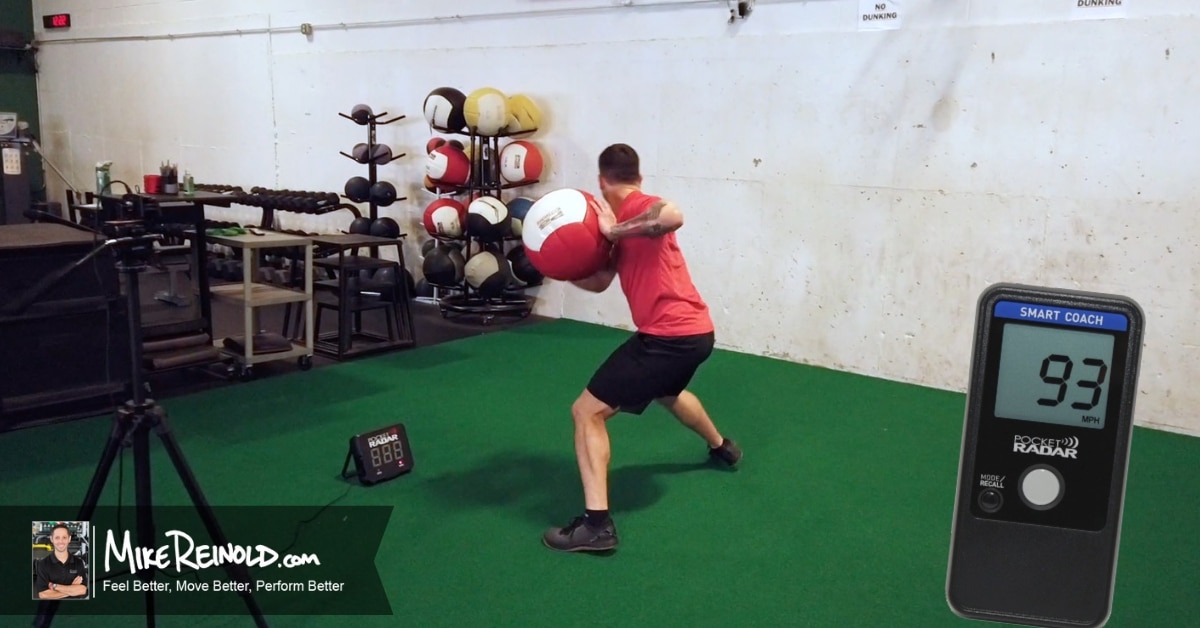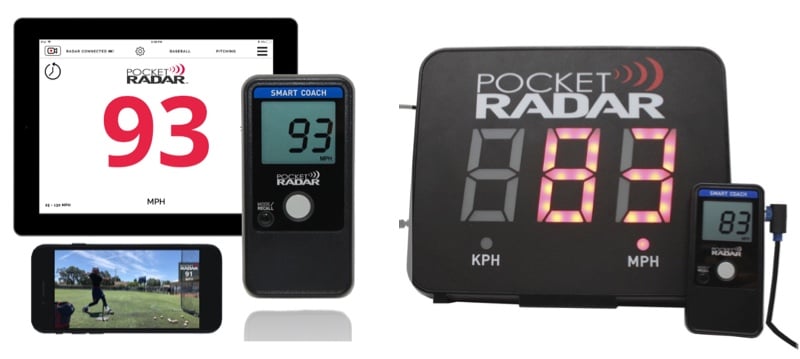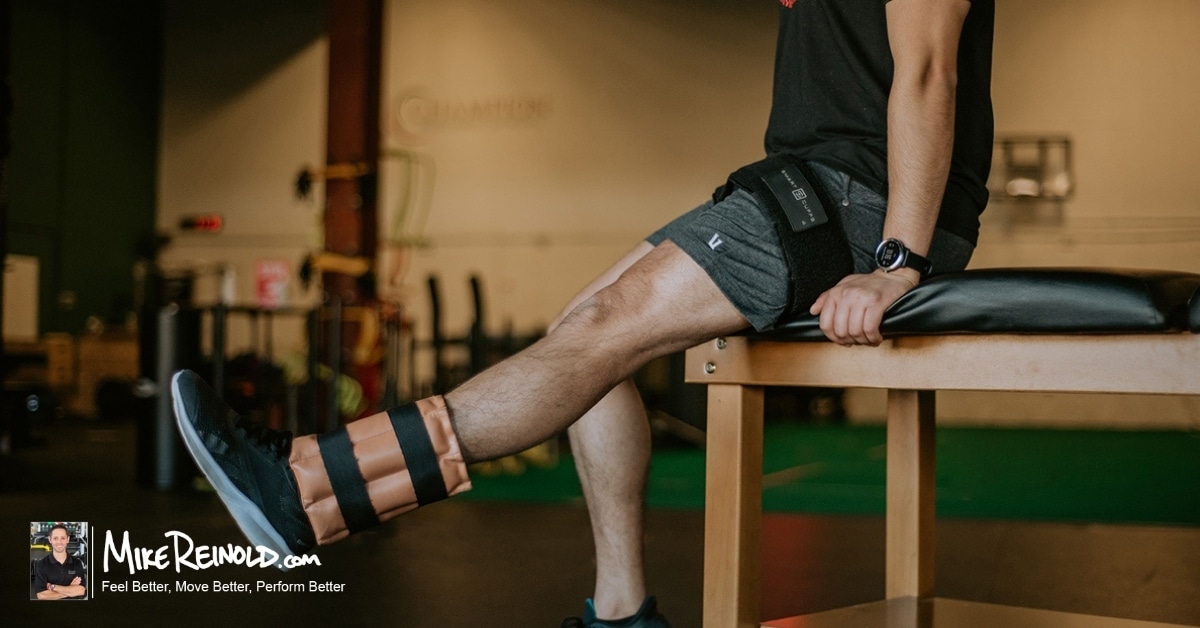I have a really simple way that we can tweak our programming to increase power development. And it’s is backed up with scientific evidence that shows you can get a quick increase in power, as well as enhance it even more by training this way over time.
Want to know what it is?
Simple.
Show the person their results.
If you want someone to jump higher, throw harder, or any other power-based movement, simply show the athlete how high they are jumping, how hard they are throwing, or how powerful their movement was.
I wrote a recent 3 Ways Baseball Pitchers Can Use a Radar Gun to Enhance Performance for Elite Baseball Performance that discusses a little bit of this concept for baseball players. But this can easily apply to anyone looking to improve their power.
Have you ever played around with a vertical jump test to see how high you can jump? No matter high you jumped on that first attempt, what did you do every time on that second jump?
Try to jump higher, right? Of course you did, we all do!
Extrinsic Feedback and Knowledge of Results
In the motor learning world, this is a form of extrinsic feedback is referred to as “knowledge of results.” This can be used to give immediate feedback to the person to enhance their technique, but also to provide motivation. We see this all the time, especially in athletes who are competitive in nature.
We know that using external feedback and knowledge of the results in the sports performance world helps increase power output.
For example, one study using external feedback and knowledge of results was shown to help improve vertical jump performance. In a 2014 study the Journal of Human Movement Science, it was shown that using feedback of vertical jump height performance results in an immediate increase in vertical jump performance, as well an 18% improvement in jump height over a 4-week training period.
In a recent study in the Journal of Human Kinetics, it was shown that if athletes were able to see their throwing velocity, the players were able to enhance their velocity by 4x more than if they did not know their speed.
Another past study compared the throwing velocity of youth when instructed to “throw the ball hard” vs the same instruction with knowledge of results using a radar gun. Again the study showed that simply instructing the athlete to throw the ball harder does not increase velocity as much as when they can visually see the results.
In another interesting study in tennis players, it was shown that training for 6-weeks with feedback of serve velocity had a significantly greater improvement in velocity than a group that did not know their results. But what is most interesting, is that this same group stopped training with external feedback of their velocity and still showed that the velocity improvements were retained 6 weeks after the program.
So it’s pretty clear, showing a person their results:
- Has an immediate increase in power
- Has a larger increase in power when performed over time with a training program
- Has carry over to maintaining enhanced power even after stopping the training program.
Looks like a win, win, win to me.
Increasing Power with Velocity Based Training
So how do we do this in our programs? We try to make sure our clients know their results.
This concept isn’t new, its essentially velocity based training. The team over at Science for Sport have a great article on velocity based training that you can check out for more details.
There are several devices on the market that can accomplish this for the strength and conditioning world. Vertical jump test kits, jump mats, the G-Flight unit, and others are all great. Some devices like the Keiser units show the power output on a screen. There are some devices that can be applied to a barbell like the Tendo Unit or GymAware. There are some newer accelerometer based devices that can also be used for a wider variety of activities, such as the PUSH band.
These are all great but come with various budgets, you’ll have to see what works for you. But one thing most of these don’t do well is help with rotational power. Maybe I am biased as I work with a lot of baseball players, overhead athletes, and golfers, but this is a huge area to focus on at least in my world.
One way that we apply this knowledge with our rotational athletes is with medicine ball power drills and a simple radar gun.
In this video, you can see we are using a radar gun set up to monitor the ball velocity. The athlete is encouraged to ramp up his intensity on subsequent throws until he reaches his maximum velocity. We’ll record this and try to improve over the course of his program, just like we would by recorded weights during his lifts.
We work with a lot of rotational athletes at Champion, so we use a lot of medicine ball drills. So using radar guns is super simple.
I’ve personally been using the Pocket Radar in the gym and think it’s perfect. Compact, simple, and affordable. We’ve compared it to the more radar expensive guns, and it’s always just as accurate, but so much easier to use.
The new Smart Coach model is awesome, it can connect to an app on your phone or tablet via bluetooth, or even an external display. This is what we’ve been using at Champion and everyone has loved it.
- Click here to learn more about the Pocket Radar Smart Coach
- Click here to learn more about the Pocket Radar Smart Coach with LED Display
A Simple Way to Increase Power
So keep this in mind when you are building programs that are designed to enhance power. A simple, effective, and scientifically backed way to get even more out of your programs is to make sure the person know’s their results. By using this form of external feedback, you’ll not be able to track progress better, you’ll also get more power out of your clients.
What other methods or devices have you used to take advantage of the knowledge of results external feedback mechanism to enhance power?






